This site uses cookies to provide you with a great user experience and to show you relevant ads. If you’re OK with that, just continue. To find out more, please review our privacy policy.
Derestricting a Euro4 Piaggio 50cc 2-Stroke Scooter
This blog details how to derestrict the newer Euro4 versions of the Piaggio 50cc 2-stroke scooters, additionally allowing further tuning possibilities.
We have used a Piaggio Typhoon 50cc 2-stroke scooter for this blog, but the principle can be equally applied to other Euro 4 Piaggio engineed scooters such as Piaggio NRG Power, Aprilia SR50R and SR Motard, which are restricted in a similar fashion.
4-Stroke vs 2-Stroke Tuning
In contrast to their 4-stroke counterparts, 2-stroke scooter engines can be easily and cheaply tuned to see a very significant increase in power. Simply fitting a sports pipe and performing basic de-restrictions can double the power of a standard 50cc Piaggio moped and unleash its top speed from a learner legal 30mph to a far more exhilarating 55mph all for less than £100.
In contrast you would struggle to get a 10% power increase from an already much less powerful 4-stroke moped for the same investment , nor will the 4-stroke lend the experience, noise and vitality of the tuned 2-stroke as it hits its high revving powerband invoking envy from it's 4-stroke peers (who realise now they bought the wrong bike) and hate from the neighbours mourning the loss of their silence.
The 2-stroke days are numbered though, on the date of writing the only 2-stroke mopeds still in production in the UK are Aprilia SR50R, SR Motard, Piaggio NRG Power and Typhoon. This is of course because 2 strokes are noisy, smelly and much less efficient than the 4-strokes and manufacturers have found it increasingly impossible to make them comply with ever more stringent European emissions regulations.
How are Euro4 Piaggio 2-stroke 50cc scooters different from previous versions?
In order to comply with strict Euro 4 emission regulations the last version of the Piaggio 50cc 2-stroke engine features a new 'electronic carb'. This incorporates an electronic air addition system: A pipe going into the carburettor allows air to be drawn into the carb, the extra air leans the fuel mixture at certain times subsequently reducing emissions and increasing fuel economy. The air flow of this pipe is controlled by a solenoid which in turn is controlled by the bikes ECU/ CDI.
A bike with a leaner fuel mixture of course uses less fuel in proportion to oxygen and in theory the additional oxygen content is said also to help burn off any unburnt fuel in the exhaust. From an emissions perspective the introduction of fresh air into the flow can certainly make the exhaust gases appear more dilute when measured.
This comes at a cost though, a lean mixture can cause the piston to run hot... the piston can subsequently over-expand and can seize inside the cylinder in which it is suddenly too big to move up and down within. This is an especially high risk with tuned engines that run lean. The bikes CDI/ECU unit tries to mitigate this risk by only activating the air solenoid at appropriate times and this model of Piaggio has the addition of a cylinder head temperature sensor which, when the cylinder head temperature gets too high de-activates the solenoid which closes the air-circuit to richen the fuel mixture and bring the cylinder temperature back down. This is satisfactory on our standard restricted Piaggio Typhoon, but the risk of seizure becomes high when you start to derestrict or modify it and it needs to be removed or disabled if you are planning on doing any tuning work.
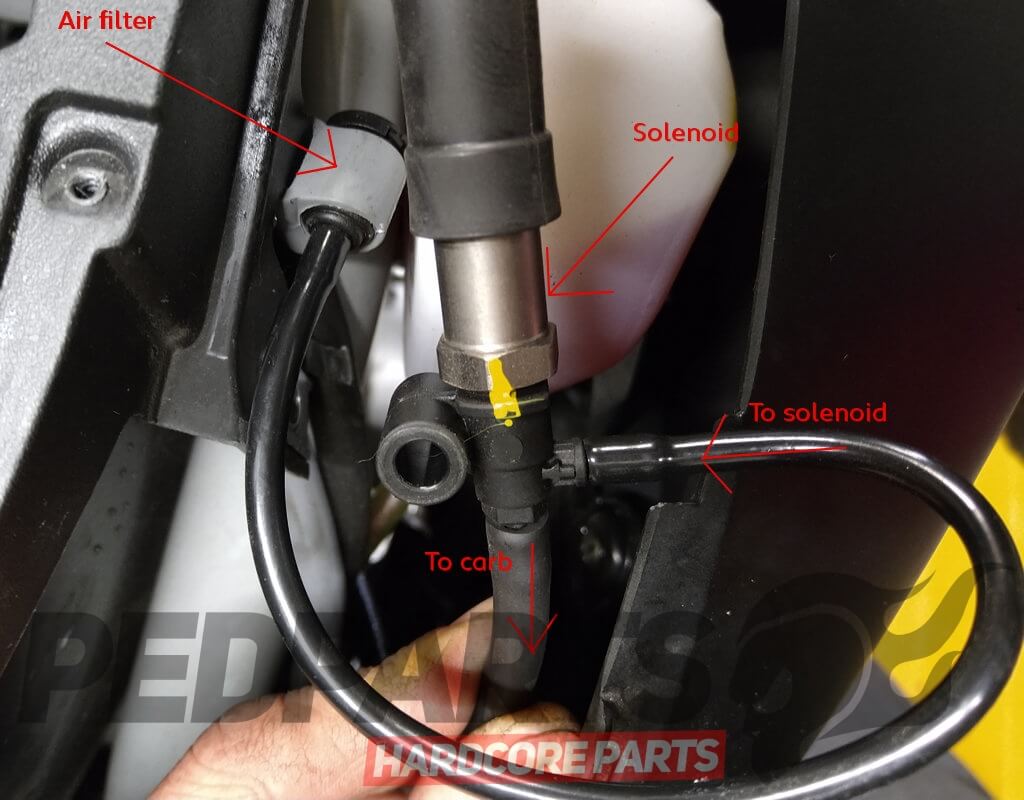
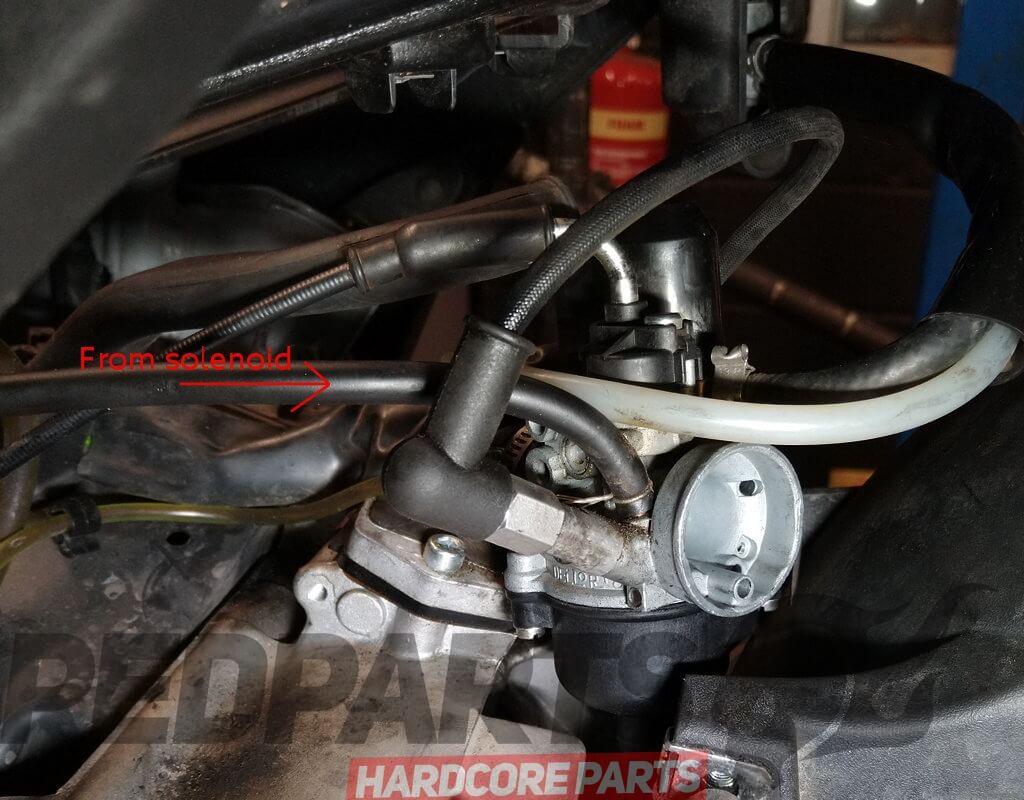
Step 1: Removing the air addition circuit.
This new air circuit makes the bike run too lean when derestricted; in order to properly derestrict or even begin to tune the scooter we need to remove this system.
There are a couple of options to disable the system:
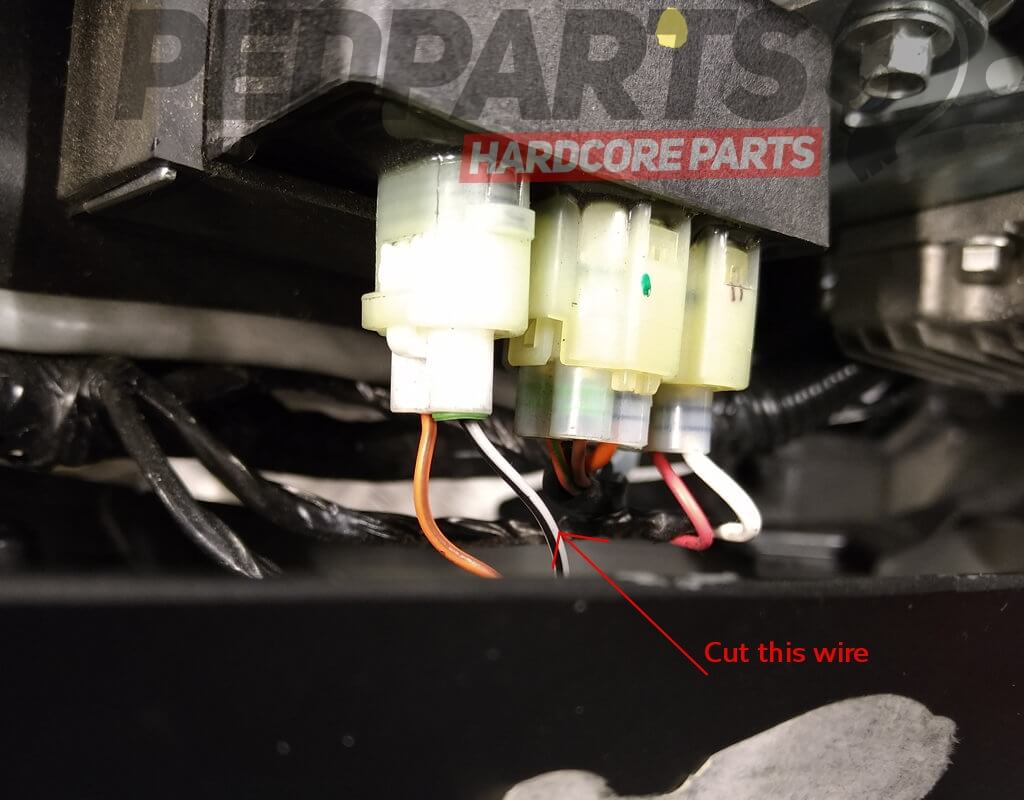
The next restriction that needs to be removed is in the variator. Previously Piaggio fitted a removeable ring which could simply be removed from the variator bush but now this is incorporated as part of the bush. The restrictor ring or (restricted bush) works by blocking the variator in the scooters transmission from fully moving out, preventing the scooter from ever getting into its top gear ratio, (this is like removing 4th and 5th gear on a car). When the variator can no longer change gear ratio the only way for the road speed to increase is for the engine speed to increase. Removing the restrictor allows for higher top speeds without the engine over-revving. Consequently it is much safer for the engine to run at 30mph when derestricted rather than 30mph when restricted because the engine will be running at lower revs as it was originally designed to do so!
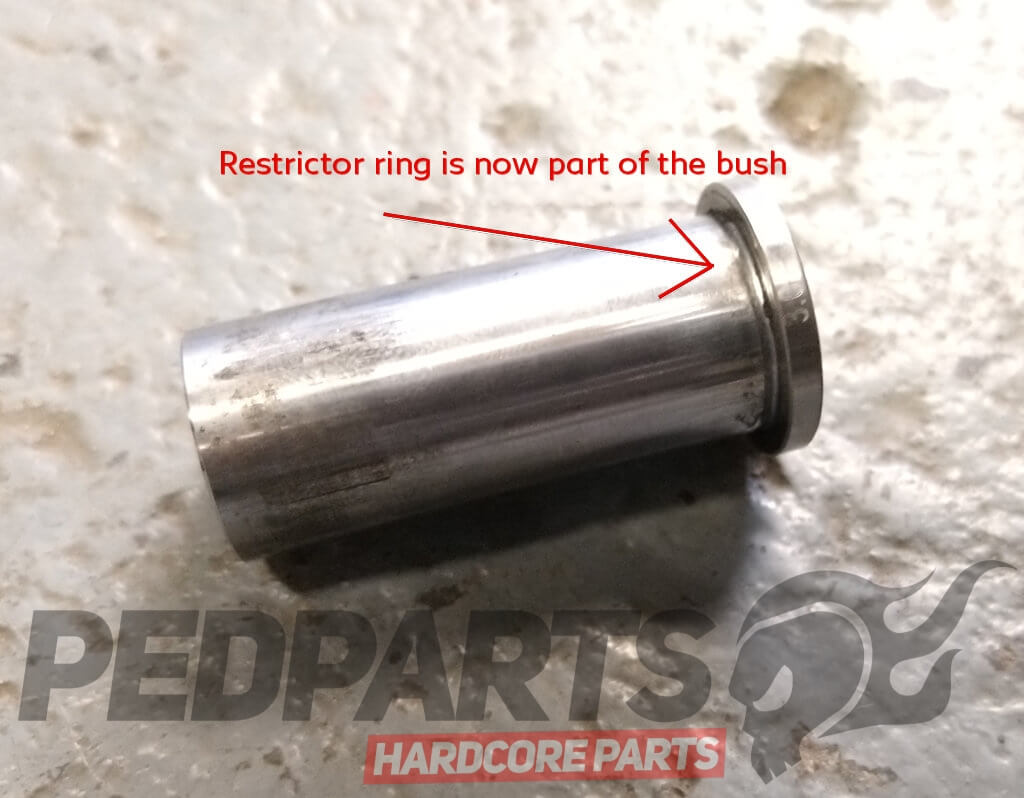
Step 2: Removing the variator restrictor.
The variator restrictor makes the scooter over-rev at higher road speeds; as the revs get higher and higher the scooter makes less and less power which in turn limits the top speed. Think trying to go 100mph in a car without using 4th or 5th gear. In order to achieve the scooters full top speed this therefore needs to be removed.
You have a couple of options you can do:

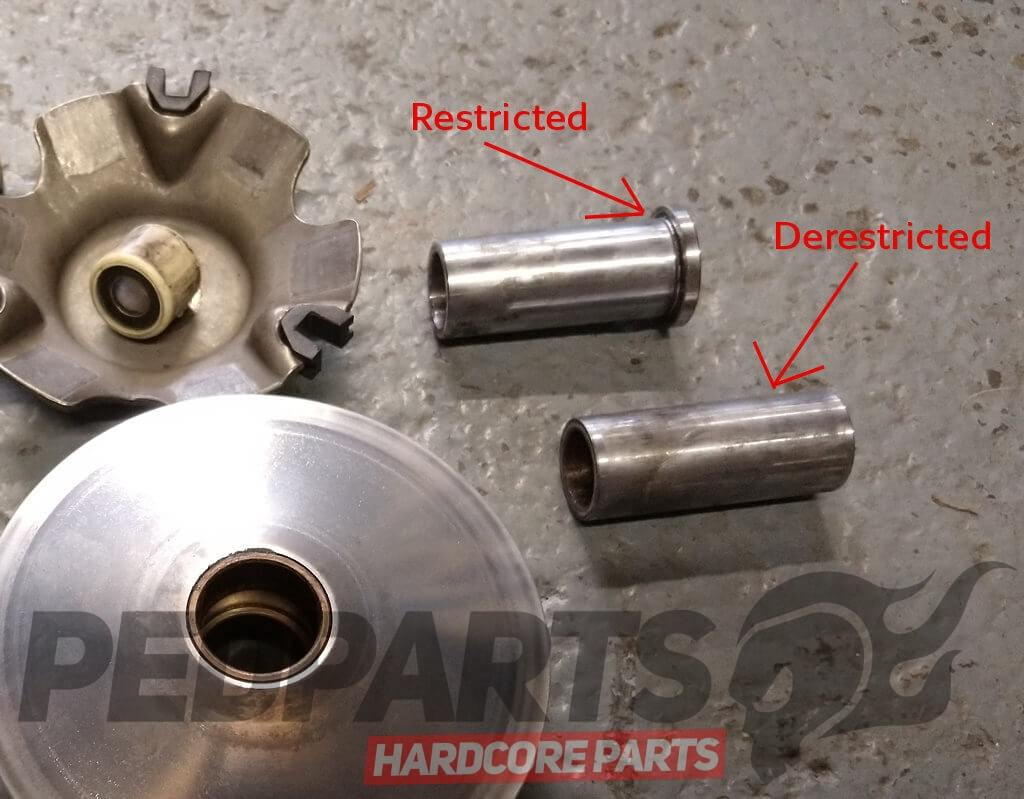
Once we have removed the additional air system and variator restrictor we are 'derestricted', the scooter will now go significantly over 40mph comfortably. At this point we are now free to explore further tuning options like fitting a sports exhaust.
Step 3: Fitting a power pipe.
Now we have derestricted the Typhoon we are able to exploit power pipes (sports exhausts) and other tuning options. To complete our Typhoon we fitted a Leo Vince TT . A Leo Vince TT is a basic budget sports pipe which will almost double the hp compared to the standard Piaggio exhaust. When fitting a powerpipe it is necessary to rejet (increase the size of the main jet in the carb) and also to fit lighter rollers to enable the variator to operate at slightly higher rpm than standard. The Leo Vince TT exhaust typically requires rollers approx 1.5 grams lighter than the standard ones, our Typhoon showed the best results on the dyno with 4.8 gram rollers fitted which is typical for Piaggio 50cc with a sports pipe and standard cylinder kit .
Historically a Piaggio 50cc engine previous to these Euro 4 ones with a sports pipe fitted when run on our dyno will nearly always jet perfectly with a 68 jet fitted. Out of 100 dyno runs, 98 of them will end up with a size 68 jet.
When we ran this newer Euro4 engine it jetted correctly with a 6mm 64 main jet , this is with the plate in the carburettor removed (the little brass plate that sits in the mouth of the carb which is visible with the airbox removed). With the Leo Vince TT fitted and correctly jetted, the scooter made the same power as the older conventional Piaggio engines and happily exceed 50mph at a safe fuel/air mixture.
